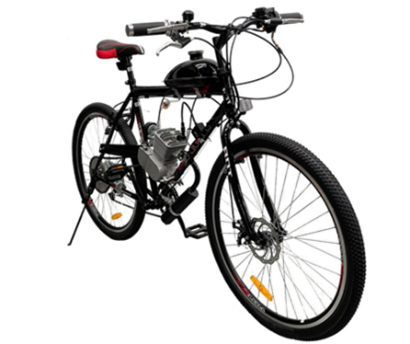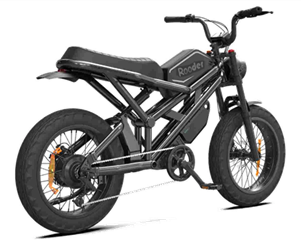E-Bike rules in Queensland
What is an e-bike?
An electric bike (e-bike) is a bike that has pedals as the primary source of power, but has a small electric motor that provides assistance to:
- start riding
- go up hills
- ride against the wind.
Power rules
To be legal to ride in public places, an e-bike must:
- have a motor with a maximum continuous power output of 250 watts
- be pedal powered with motor assistance up to 25 km/h
- have a motor that stops providing assistance after 25 km/h
- have a motor than can work without pedalling, but only up to 6 km/h.
Types of legal e-bikes
There are two types of e-bikes allowed in Queensland:
- EPACs (Electrically Power Assisted Cycles)
- 200-watt e-bikes
Some examples of legal e-bikes



Most legal e-bikes comply with the standard for Electric Power Assisted Bicycles (EPAC) EN15194. Look out for a compliance sticker on the bike like this:

What is the age limit to ride an e-bike?
There is no minimum age limit required to ride an e-bike.
Where can you ride?
You can ride an e-bike on most roads and paths in Queensland, unless signs say bikes are not allowed. You must follow the bicycle rules, including the speed limit, when riding an e-bike.
Do you need a licence or registration?
No. You don’t need a licence, registration, or insurance to ride a legal e-bike.
Illegal devices
The following devices are considered illegal to be ridden on public paths or roads in Queensland:
- petrol or other combustion type of engine powered bikes
- bikes with motors over 250 watts maximum continuous power rating
- bikes that only use a throttle (for example, no pedalling required to power the bike)
You can be charged with unregistered, uninsured and unlicensed offences if you or your child/ren are caught using an illegal device on the road. Police can also confiscate and impound illegal devices.
Some examples of illegal devices



Can I modify my e-bike?
e-bike conversion kits must still comply with the same device requirements as all e-bikes.
If a modification makes your e-bike non-compliant, it cannot be used in public paths or roads in Queensland. For example, tampering with a device to increase the speed or motor output makes it illegal.
What if my e-bike says it can be ‘unlocked for private property use’?
Devices fitted with a motor over 250 watts maximum continuous rated power are not allowed to be used on any public paths or roads in Queensland.
It is important to note that devices with more powerful motors that are ‘locked’ to 250-watts are also prohibited.
Rider rules
When riding an e-bike you must follow the bicycle rules. Important points to note:
- always wear a helmet
- obey speed limits (motor can only help you up to maximum 25 km/h)
- only carry passengers if the bike is made for it—and they must wear a helmet too
- don’t use your phone while riding (unless it’s in a cradle and hands-free)
- give way to pedestrians on footpaths and shared paths
- don’t ride on the pedestrian side of separated paths
- don’t ride under the influence of alcohol or drugs
- no riding on motorways or anywhere a ‘no bicycle’ sign is installed
- if there’s a crash, stop, help anyone hurt, and share your contact details.
If you break the rules, you may get a fine.
Know the difference: e-bikes verses other electric bikes
Some electric vehicles look like e-bikes but are actually electric motorcycles. These:
- don’t have pedals
- can go very fast
- look like mopeds or dirt bikes
If used on a Queensland road, these vehicles need registration, insurance, and a licence. They are not allowed on paths.
Examples of electric vehicles that can be registered and are often confused with standard e-bikes



Not all electric motorcycles can be registered. If the device doesn’t meet safety standards for general or conditional registration, it cannot be used on roads, paths, or any public place.
If your device doesn’t meet the rules, it must only be used on private property.


